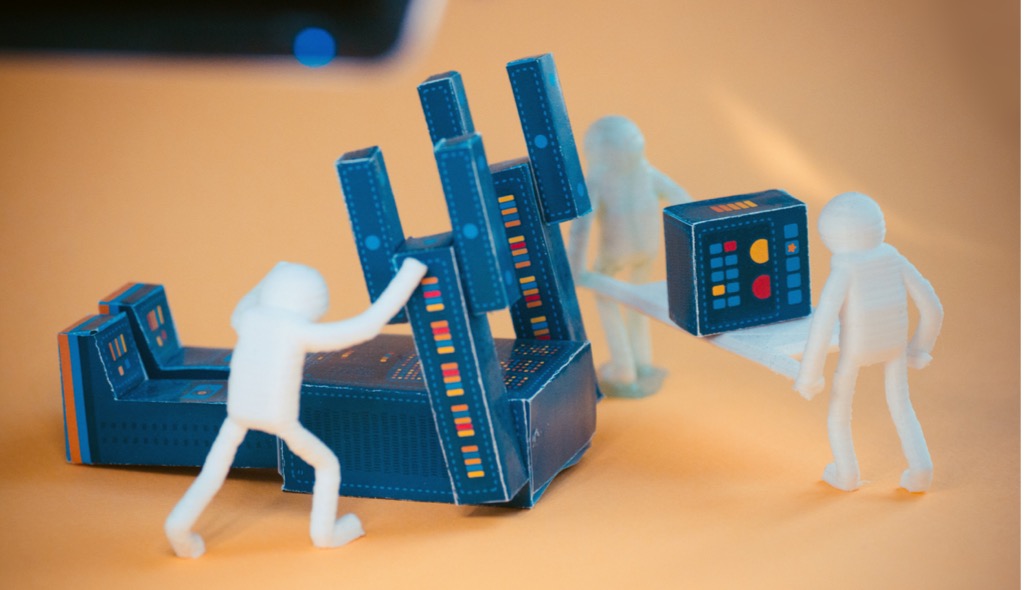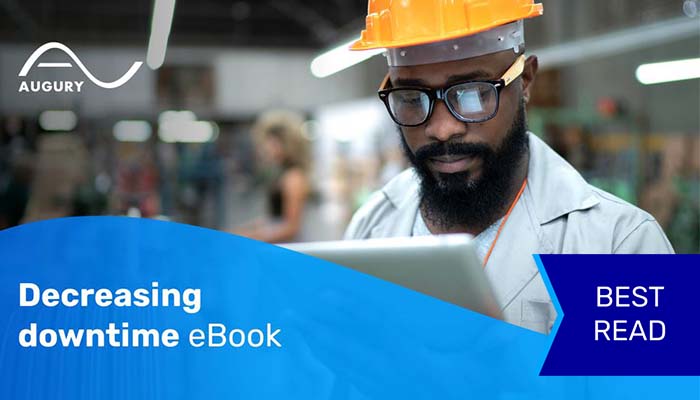
Forget house flipping–that’s for amateurs. You gotta go bigger than that. Flip your old factory into a modern, high-tech workplace. It all starts with designing your downtime, on your time.
Unplanned downtime. It dogs pretty much everyone involved in maintenance and reliability. But what’s worse is unnecessary downtime. Downtime that could have been scheduled, avoided, or even prevented if machine failures were predictable.
That’s exactly what our two experts tackled in the first webisode of Flip This Factory: Design Your Own Downtime.
Meet the Experts
Dave Penrith, recently retired, spent his 36-year career with Unilever in the UK, ultimately serving as global Chief Engineer.
On the other side of the Atlantic, Terry LeDoux was VP of Nestlé Purina North America before retiring after a 33-year career in information systems.
Both Dave and Terry are champions of digital transformation, with deep experience in the successful rollout of Industry 4.0 initiatives. Here are their key takeaways on how to start fixing downtime for good, without using temporary hacks.
#1: Turn Knowledge and Insights Into Wisdom
According to Dave, you’ve got to start by thinking about it as a process. “There’s a lot of solutions out there that will give you data. But you’ve got to move that data into knowledge and insight and then into wisdom. Machine health is the first step in that journey. It’s a foundation you can build everything else on top of.”
Terry agreed. “Most of us have some form of CMMS or maintenance solution that we work with in our factories. But over time that data becomes less and less accurate as players change. So sometimes you just gotta take a step back and do something very simple…actually walk your product flow. Anything that your product flow touches that could stop that product flow is probably critical.”
…you’ve got to move that data into knowledge and insight and then into wisdom.
– Dave Penrith
#2: Measure What You Treasure
It’s easy to get lost in a sea of acronyms, metrics, and complex measures. (OEE anyone?) But our experts are firm on this point: simple is better.
“Strip it back to the basics,” Dave said. “Production is about boxes on trucks. How many boxes could you have put on the truck and how many did you actually put on the truck? Start from that level first because otherwise, there’s a risk that we get comfortable hiding behind some of the complex definitions.”
Once you know how big or small your problem is, you’re on solid ground to find a solution. At that point, “…it’s about trying to find the tools and right vendors that will help get you there faster,” Terry said.
#3: Shift the Culture
People can be resistant to change. So listening to the shop floor users, making it simple, and communicating the benefit is key.
“Nobody ever solved the shop floor problem in a boardroom,” Dave said. “We’re trying to shift culture and behavior from problem-solving to problem-avoidance. We’re trying to give the shop floor folks the tools to fix their own problems.”
Moving from problem-solving to problem avoidance is a paradigm shift that needs reinforcement. After all, maintenance techs are trained to go fix whatever is in the red, melting down, and setting off alarms.
“But what really needs to happen is to focus on the green, and publicly recognize people who are having great days,” said Terry. “You need to understand what they are doing to have those great days. And very often it’s that they’re using the tools that you put out there in the right way. Or they put forth ideas on better ways to use those tools. So recognition and reward is a small investment that really drives a lot of improvement.”
For folks on Dave’s team, that might mean winning the “Scotty Award”, named after Star Trek’s chief engineer, Montgomery Scott. “Scotty seems to save the Enterprise every week or every episode. So we had a Scotty award for someone who’s gone out of the way and done something different and saved the day.”
Nobody ever solved the shop floor problem in a boardroom.
– Dave PENRITH
#4: Data, Served Fresh and Hot
Most reports are a look back at what happened–what Dave likes to call “cold” data. So any good machine health report is ideally forward-looking, predictive, and prescriptive.
That data helps teams plan forward and across the organization. It’s where the idea of problem avoidance comes back in.
“You need fresh, hot data that helps you see what’s coming down the pipe,” Dave said. “Imagine a scenario when you’re running production and you’ve got a forward-looking system and it tells you that an asset is going to fail within seven days. You know that you’re going to have to take some time out to address that potential failure. But let’s say you also know that there’s going to be a material outage within three days because the suppliers are falling short. Just imagine having the ability to make those two interventions coincide. What you’re doing is combining what could have been two sources of loss into a single point of planned loss. Taking advantage of that is planning and designing your downtime.”
#5: Find a Strategic Partner
When it’s time to move forward, it is critical to find a vendor who doesn’t just throw data over the transom.
“My mission was to make the world’s best pet food,” said Terry. “It wasn’t to be the world’s best at machine learning, end-to-end systems, and predictive maintenance. I wanted to find that strategic partner that could enable me to go fast and wide because, from a money perspective, you’ve got to consider time-to-value. The longer it takes me to get this technology in, the more downtime I’m incurring.”
Dave noted that while you might be able to DIY sensors and data, what you won’t have is the “hundreds and thousands of running hours of benchmark performance for a range of different assets and cycles. We couldn’t get to knowledge or insights and we definitely could not get to wisdom.”
Simply put: your strategic partner needs to be predictive, forward-looking, and always on.
The longer it takes me to get this technology in, the more downtime I’m incurring.
– Terry LeDoux
Bonus Tip: Think Big, Start Small, Scale Quickly
When it comes to new tech solutions, lots of manufacturers find themselves stuck in pilot purgatory. But it shouldn’t, and doesn’t, have to be that way.
Terry shared that his teams set a good, baseline measurement so they knew what success would look like. Then, at the end of a 90-day pilot, if they had 70% success, it was time to go big with speed.
For Dave, scoping the right size pilot is critically important too. “Manufacturing systems are complicated, and complicated things will fail in complicated ways. When a pilot is so narrow, there’s a risk that nothing fails. And the learnings are in the failures more than they’re in the successes. If you can get the correct size of pilot, to prove that it works, it will go big.”
In Terry’s opinion, “If you don’t jump on this next Industrial revolution and move your workforce to a mobile environment, you are going to fall behind. Yes, this is all new stuff but fail fast and pick yourself up. Learn from it and go try something different.”
Dave agreed, adding, “Don’t overcomplicate the metrics, and remember, it’s a people journey first.”
Ready for More?
Dave and Terry had much more to say on how manufacturing teams can design their own downtime. To listen to the full conversation, and get access to all the extra goodies like downloadable cheat sheets, head over to Flip This Factory and sign up. You can also catch up on other webisodes in the series.




